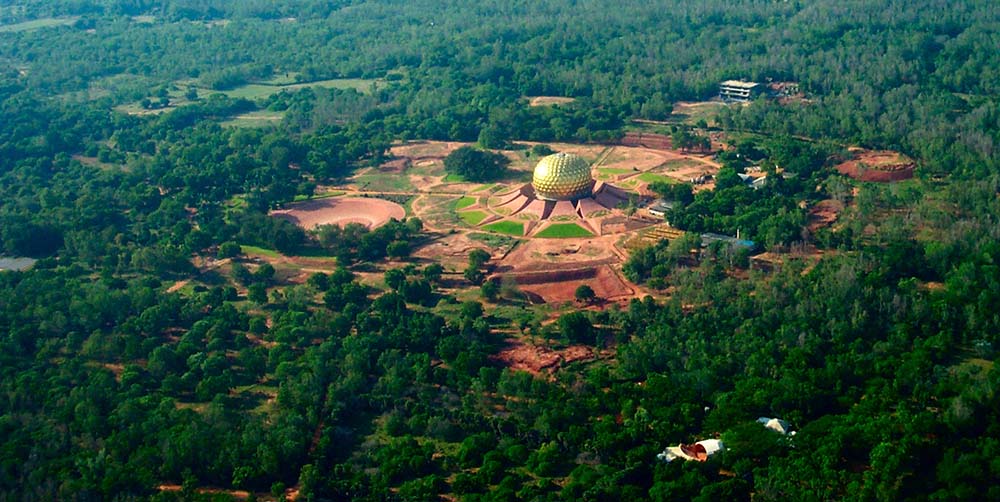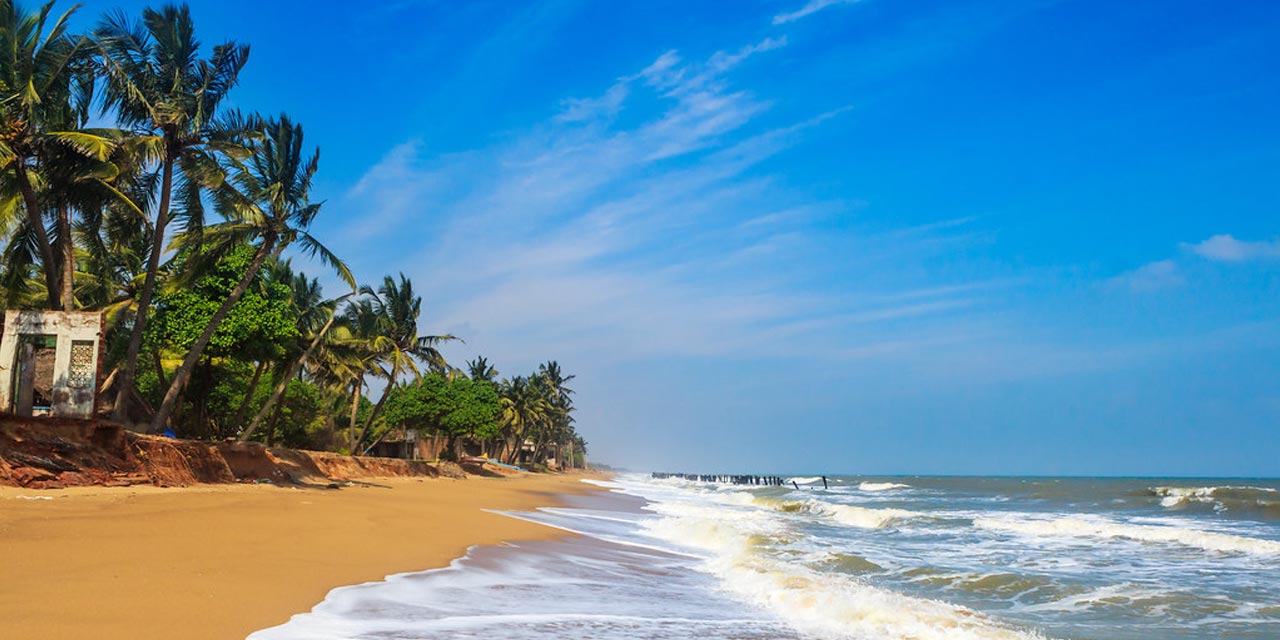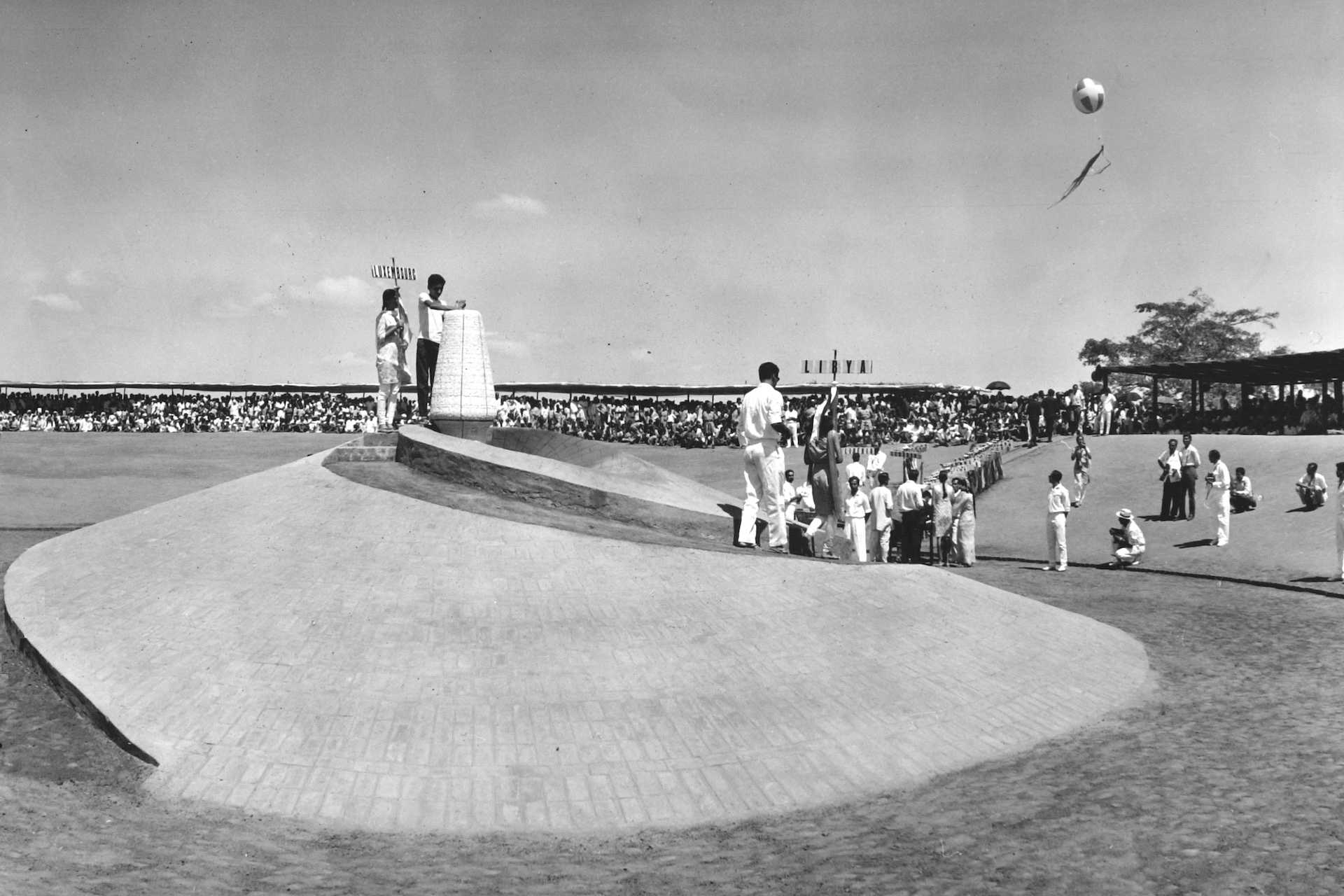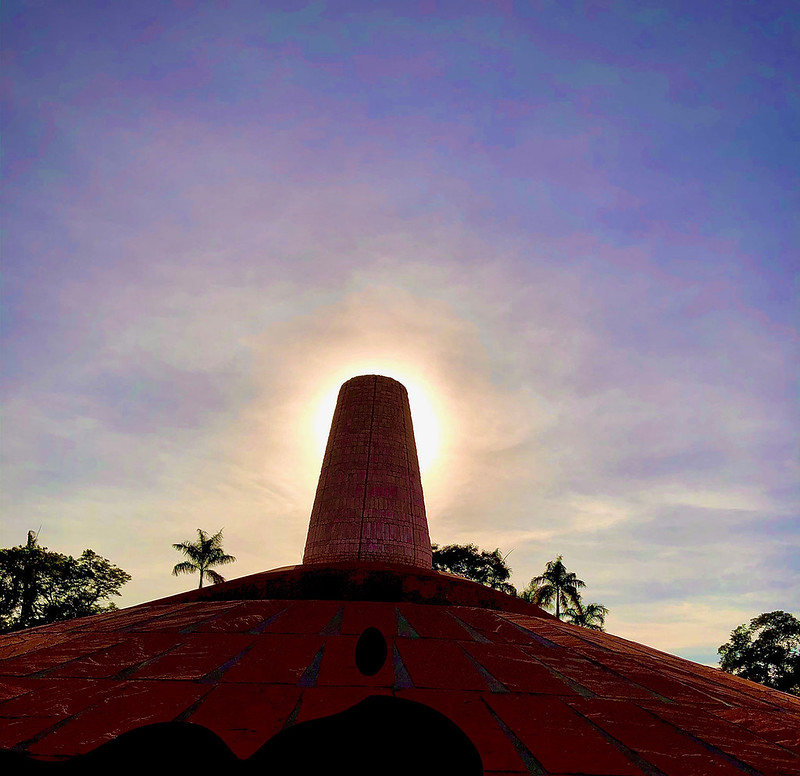Land and Nature

Auroville, as does India, holds an abundance of natural beauty. Much of it is due to the land work and reforestation work carried out over several decades. Visitors to this land can see for themselves the fruits of those labours, and someone visiting for the first time may be struck by a few salient physical features.
Red Laterite Earth
Auroville is located on a plateau some 50 metres above sea level. Ignoring the gentle slope up from the sea all the way to the Matrimandir, and a number of erosion features, the land is essentially flat in the sense that it is without any hills or escarpments. Rainwater running in streams across the ground betrays otherwise unnoticeable subtle grades. Over time these streams carrying monsoon rain have cut deep grooves into the earth on their journey to the Bay of Bengal. Carrying topsoil away, they have left several canyons within Auroville. Multihued in whites, reds and browns, comprised of sand, pebbles and the ever-present red laterite earth, home to many birds and small animals, reptiles and insects, these heavily eroded areas are now forests as a result of decades of afforestation work.
Forested Areas
The Auroville forests consist of several indigenous tree species resistant to drought. Banyans, Acacias, and Neem trees form a major component of the tree cover. Occasional thickets of mature green and yellow bamboo reach toward the sky and sway in the ocean breeze. The Auroville bamboo stalks with their fine leaves have inspired many master artists; they breathe elegance and grace of form.
The 'work' tree (Mother's name for Acacia auriculiformis), native to Australia but introduced in Auroville in the early years, has made a bold attempt to dominate the local habitat. It is widely used in carpentry and construction on a local scale..
Giant banyan trees, found in tropical climes, form vast, arching tents; their aerial roots descend from upper branches seeking the earth. Thick, twisting limbs support sturdy green leaves. Due to their vast canopies, banyans attract flocks of crows, parrots and mynahs by day, followed by huge flying fox fruit bats at night.
From the insistent and repetitive cry of the 'brainfever' bird (common hawk cuckoo, Cuculus varius Vahl) to the milder chirping of varied small songbirds, forests across Auroville resound with clear melody.
Lakes and Kolams
There are a few lakes around Auroville - the Kaliveli Tank and the lake at Lake Estate being the main ones. Freshwater bodies within Auroville are found in kolams, and in the small dam in Aurodam. Functioning as natural ponds, kolams fill during the monsoons, and serve as watering holes for animals, bathing and washing places for villagers, as well as containments to hold water until it can seep back into the aquifers.

Visitors notice the lack of tarred roads inside Auroville. The three arterial main roads through which one can journey towards Auroville are tarred as they bear heavy traffic connecting the highways to the north and south of Auroville. They also connect the four main villages in the vicinity of Auroville that are rapidly growing in population and urban density.
Roads in Auroville are either dirt paths or paved with materials using a low carbon print. The roads function for low volumes of motorised traffic. Cycle paths run along the roads for the benefit of cyclists. As envisioned by the Mother, Auroville will be free of polluting transport in the future.

Auroville lies on the 'Coromandel Coast'. Here the Bay of Bengal invites regular swimmers, avid surfers, and weekly sunbathers. Auroville beach access points lie between local fishing villages. Fishermen rise well before dawn, and can be seen offshore standing on their palm tree canoes. In the distance against the sunrise they appear to walk on the water. Due to the constant erosion of beaches, several governmental efforts are currently working on resolving this important issue.
See Also
-

Auroville's Background
Foundations for the CityAuroville wants to be the first realisation of human unity based on the teaching of Sri Aurobindo, where men of all countries would be at home. The city-in-the-making is located on the Coromandel Coast in south India. It draws its inspiration from the vision and work of the renowned Indian seer and spiritual visionary, Sri Aurobindo. His spiritual collaborator, The Mother, founded the township in 1968 and gave its Charter.


